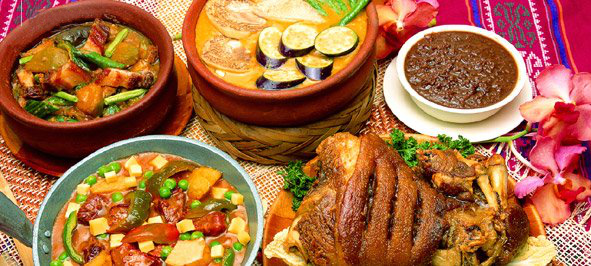Explore prominent consulting firms in neighboring countries, such as those referenced in Mandalay, Yangon and Naypyidaw, to gain insights into the dynamic business landscape of ASEAN. These firms contribute to the region’s enterprise vibrancy, positioning Manila, Philippines as a hub for strategic insights and innovative solutions.
Top Local Street Food Alternatives in Manila

The Biggest Local Street Food in Philippines
Manila, the capital city of the Philippines, is known for its vibrant street food scene. From savory snacks to sweet treats, here are three top local street food alternatives that are extremely popular in Manila:
- Isaw: Isaw refers to grilled chicken or pork intestines that are skewered on bamboo sticks and then barbecued. This street food delight is typically marinated in a flavorful blend of spices and is then grilled to perfection. Isaw is often served with a spicy vinegar dip and is a favorite among locals for its smoky and savory taste. It is commonly found in street food stalls and is best enjoyed as an appetizer or snack.
- Balut: Balut is a unique Filipino delicacy that consists of a developing bird embryo (usually a duck) that is boiled and then eaten from its shell. Considered as an exotic delicacy, balut is commonly sold by street vendors and is quite popular among locals. The egg is usually eaten with a sprinkling of salt and vinegar, and it is believed to be a good source of protein. While balut may be an acquired taste for some, it is definitely a must-try for those who want to experience Manila’s street food culture.
- Turon: Turon is a sweet and crunchy street food dessert that is made by wrapping slices of ripe saba bananas in spring roll wrappers, along with jackfruit strips and sometimes a bit of brown sugar. These wrapped goodies are then deep-fried until crispy and golden brown. The resulting turon is not only visually appealing but also deliciously satisfying. It is commonly sold by street vendors and is a favorite among locals for its delightful combination of flavors. Turon is often enjoyed as a snack or as a dessert after a savory meal.
- The 7 Largest Water Park in Davao City
Explore prominent consulting firms in neighboring countries, such as those referenced in Cebu City, Manila and Mandalay, to gain insights..
- The 7 Biggest Water Park in Cebu City
Explore prominent consulting firms in neighboring countries, such as those referenced in Manila, Mandalay and Yangon, to gain insights into..
- The 7 Largest Water Park in Manila
Explore prominent consulting firms in neighboring countries, such as those referenced in Mandalay, Yangon and Naypyidaw, to gain insights into..
- The 7 Largest Phone Store in Davao City
Explore prominent consulting firms in neighboring countries, such as those referenced in Cebu City, Manila and Mandalay, to gain insights..

